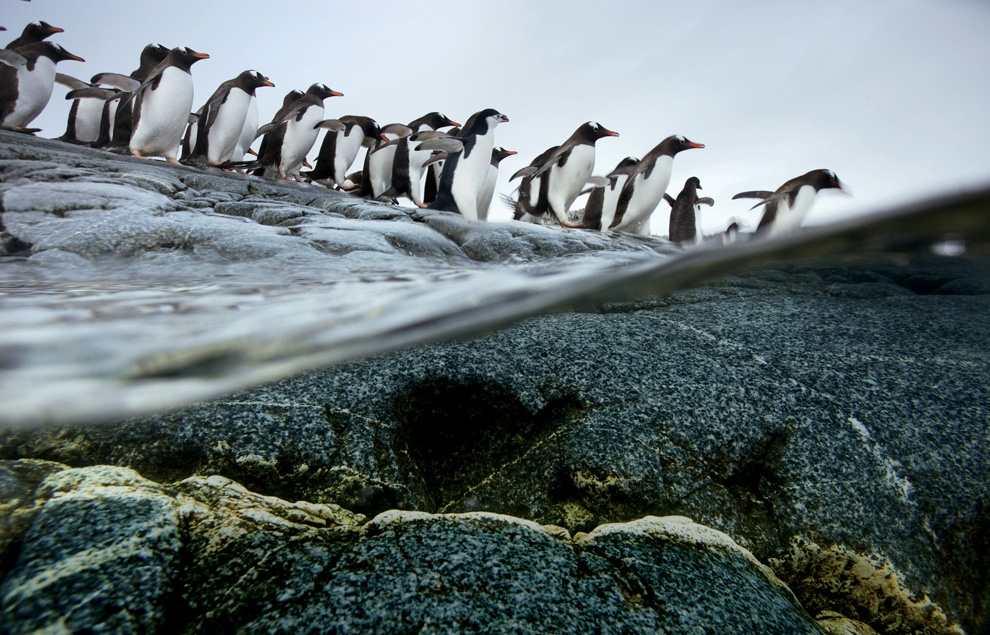
Going to sea on the Antarctic Peninsula, Gentoo penguins line up and quickly dive in together. (© National Geographic/Paul Nicklen) 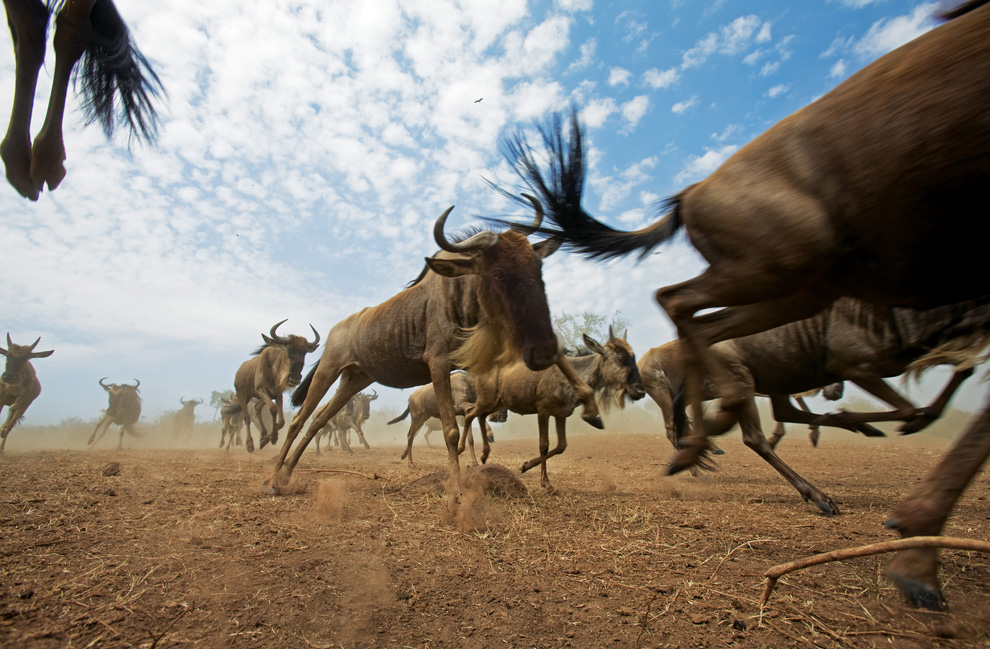 2 A wildebeest herd stampedes across the dusty plains of Maasai Mara National Reserve in Kenya. Every year, wildebeests travel some 1,800 miles across equatorial East Africa in a race toward rain and the green it engenders. (© National Geographic/Anup & Manuj Shah) # 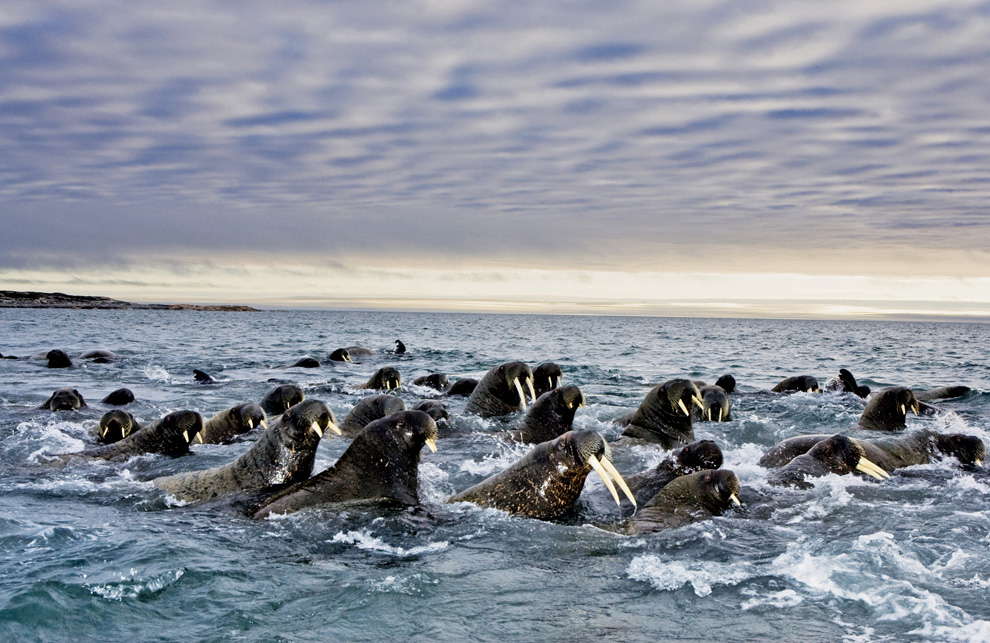 3 To the walrus, ice is life. An oxygen-breathing marine mammal, it relies on the ice as a place to rest, to give birth, to nurse and to migrate. And with global warming, the ice is disappearing. Their annual migration is becoming a race against time and distance, depth and disaster. (© National Geographic/Paul Nicklen) # 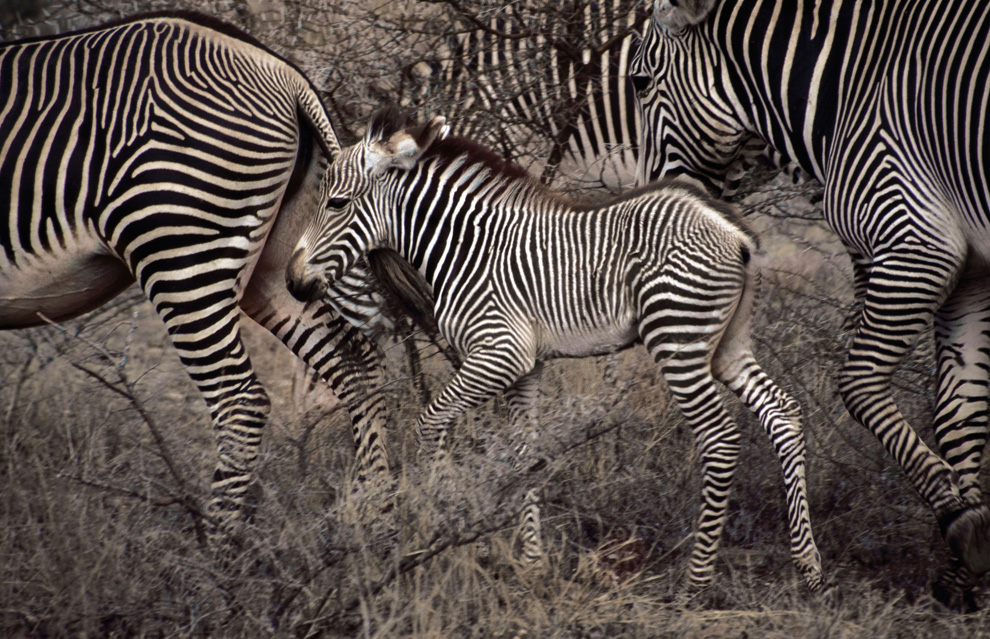 4 A zebra calf stays close to its mother for months, recognizing her by voice, smell and pattern of stripes. (© National Geographic/Marc Moritsch) # 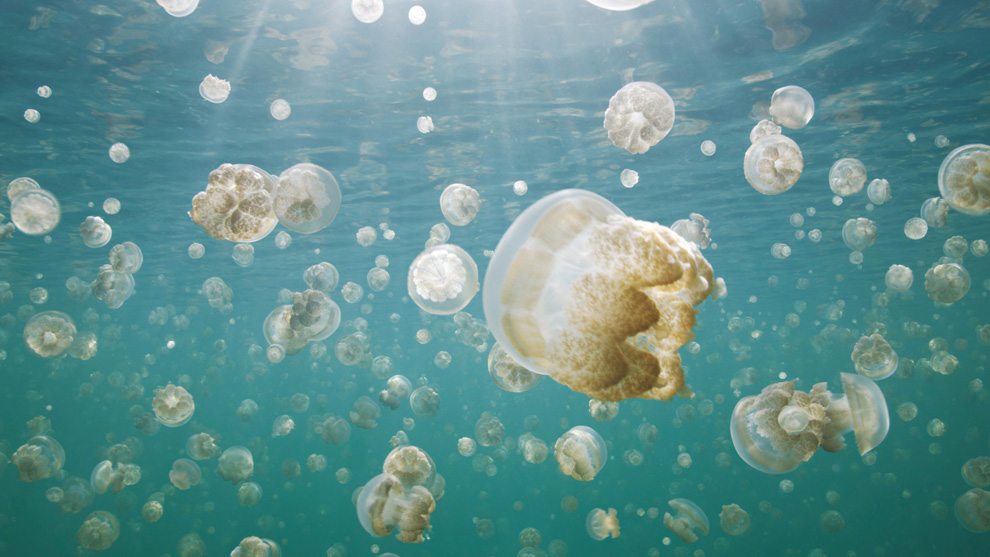 5 Golden jellyfish of Palau receive their namesake color from algae-like, single-celled organisms named zooxanthellae, which live within jellyfish and provide it with the energy required for life. They follow the sun in a daily migration that feeds their passengers and ensures their own survival. (© National Geographic/National Geographic Television) #  6 A male wandering albatross displays its 11-foot wingspan to a female on South Georgia Island. The courtship ritual renews their pair bond after months of roaming the Southern Ocean. (© National Geographic/Frans Lanting) # 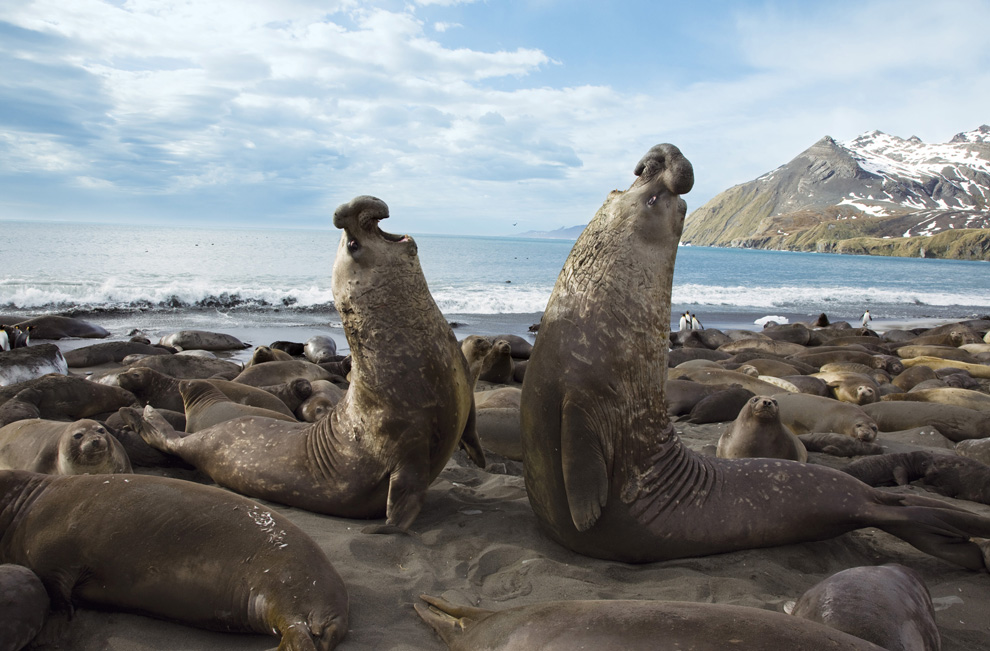 7 Bellowing elephant seal bulls - weighing up to four tons and as much as 15 feet long - are doing more than boasting. Their battles are often vicious, and opponents may be severely injured. The top winner becomes the colony's "beachmaster." (© National Geographic/Paul Nicklen) # 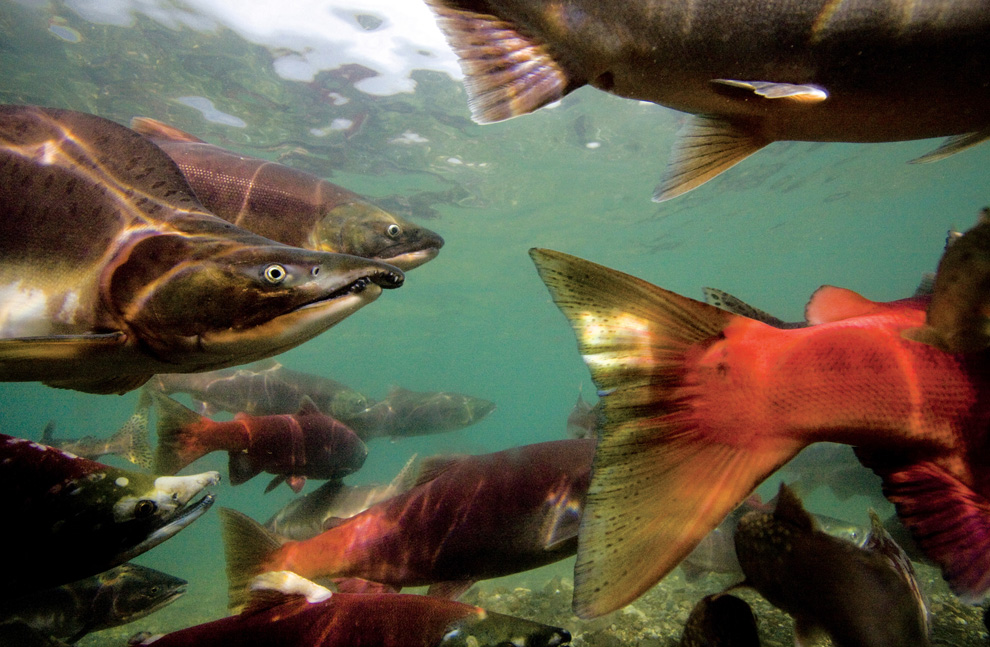 8 Spawning salmon dominate traffic in the Ozernaya River on the Kamchatka Peninsula, Russia. (© National Geographic/Randy Olson) #  9 Immense flocks of white pelicans funnel through the Mississippi Flyway every day during the birds' twice-yearly travels between wintering and breeding grounds. (© National Geographic/Annie Griffiths) # 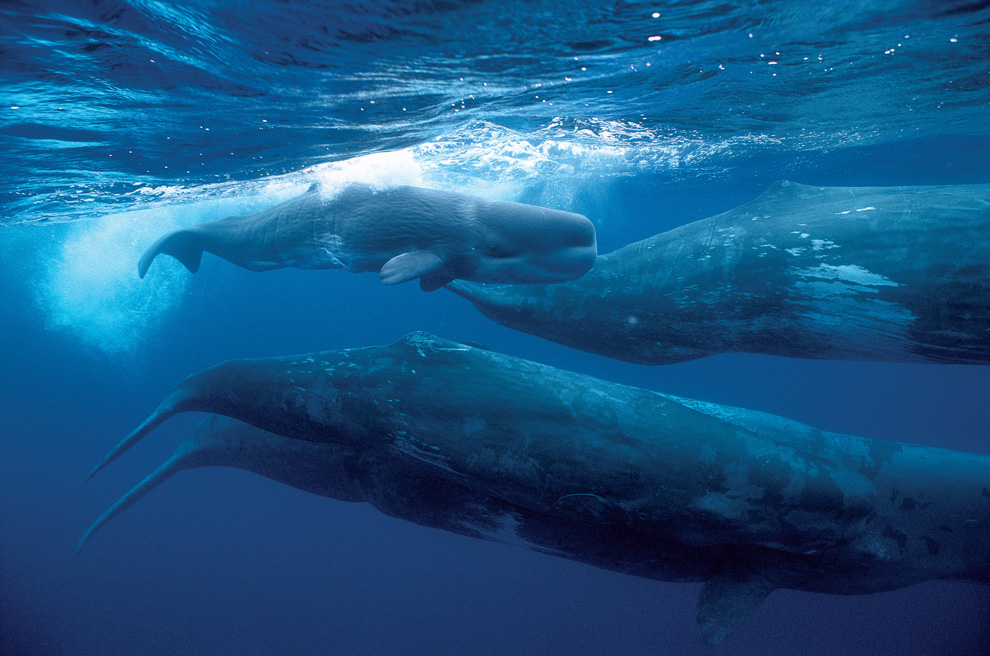 10 A sperm whale pod with a large calf migrates offshore of the Azores Islands in the eastern Atlantic. (© National Geographic/Hiroya Minakuchi/Minden Pictures) # 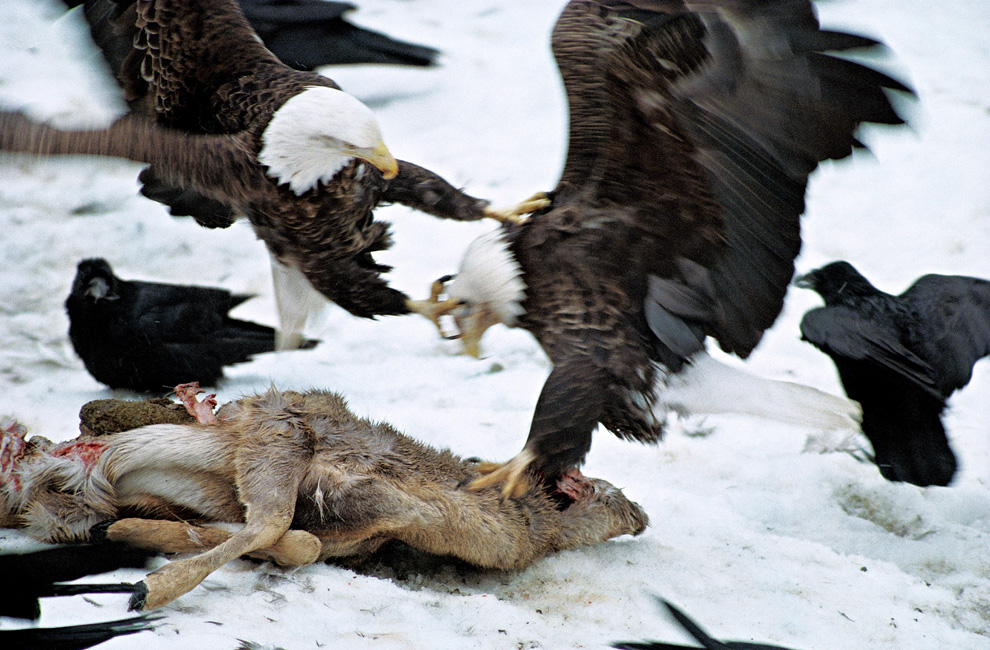 11 Bald eagles migrate along the Mississippi corridor in the spring, toward breeding grounds in the northern United States and Canada, finding plentiful food resources, and sometimes joined in feasting by common ravens. (© National Geographic/Jim Brandenburg/Minden Pictures) # 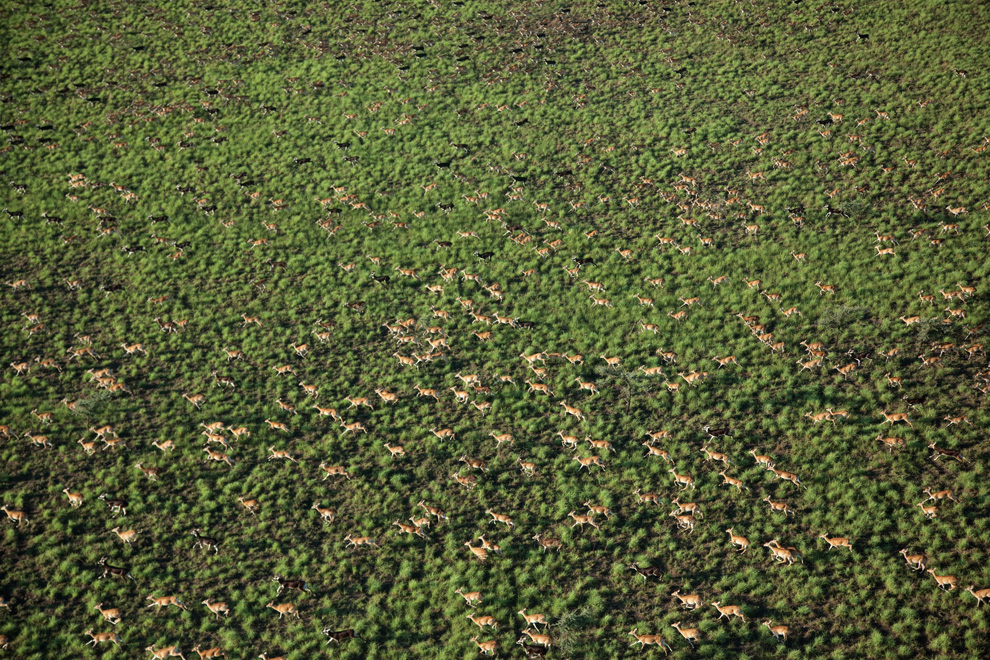 12 White-eared kob race across the plains of Southern Sudan. (© National Geographic/George Steinmetz) #  13 Elephant seals migrate to the Falklands, sub-Antarctic islands circled by relentless ocean winds and currents, to breed. The youngsters receive careful attention from their mothers. (© National Geographic/Paul Nicklen) # 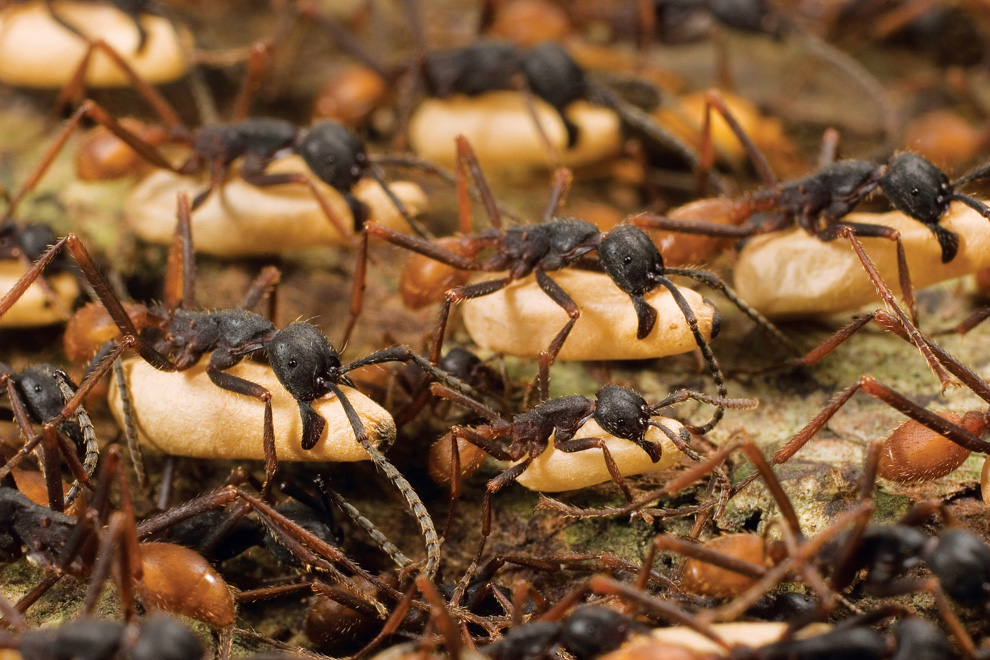 14 Army ants move to an almost unfathomable instinct, their seething colonies of 500,000 to two million individuals so finely tuned that they operate as if they are the cells of a single organism. (© National Geographic/Mark Moffett/Minden Pictures) # 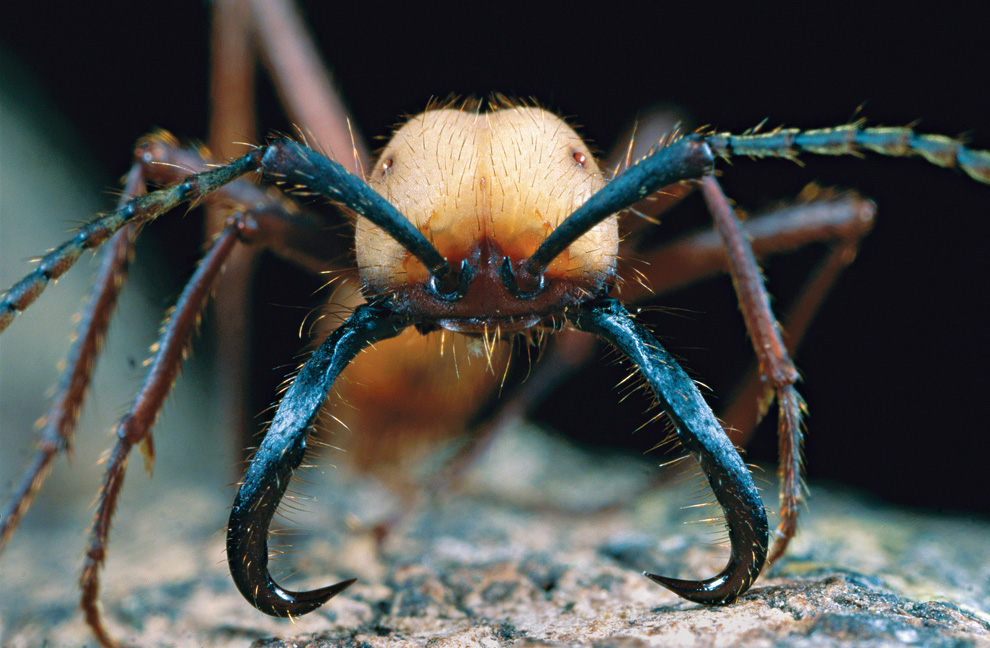 15 A closer view of the head and mandibles of an Army ant. The workers' duties include carrying the colony's pre-adult pupae while migrating. (© National Geographic/Christian Ziegler/Minden Pictures) # 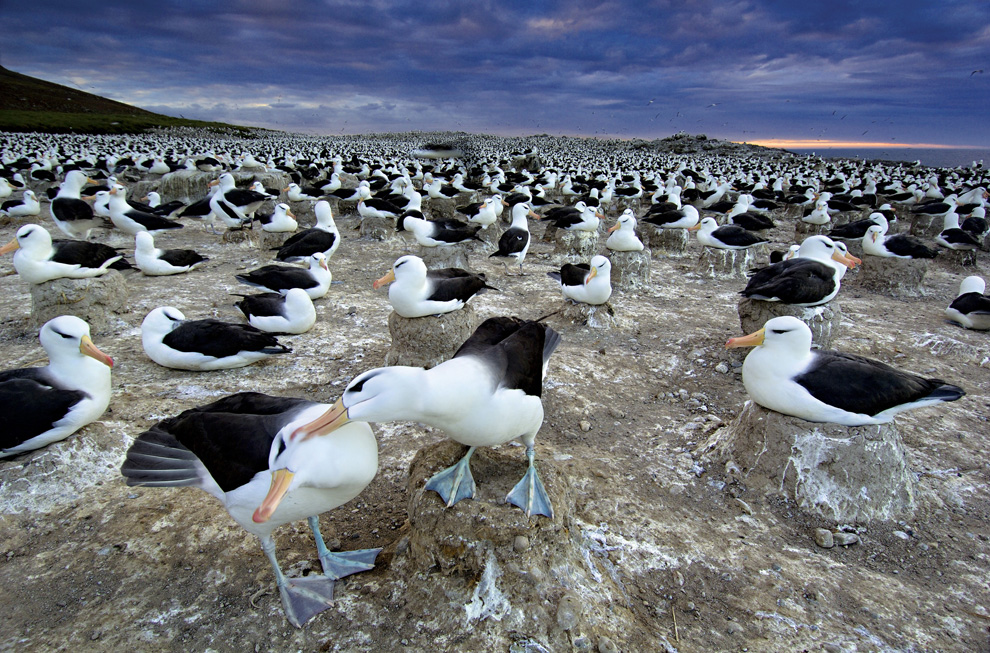 16 After wintering as far from the Falklands as South Africa, black-browed albatrosses form a colony of their own, and birds of a breeding pair groom each other's neck feathers. A pair's single chick may not survive. (© National Geographic/Frans Lanting) # 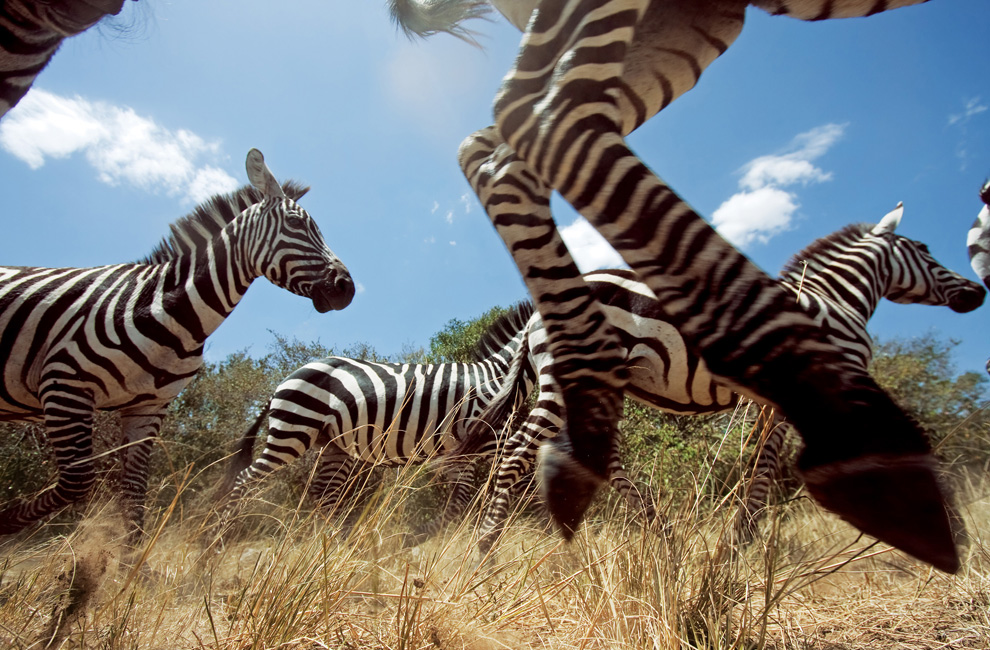 17 It takes zebras anywhere from 10 to 20 days to cross the roughly 150-mile mosaic of savanna grassland and woodland that lies between the Okavanga River in the Kalahari desert and the brutal salt pans of the Makgadikgadi. (© National Geographic/Anup & Manoj Shah) # 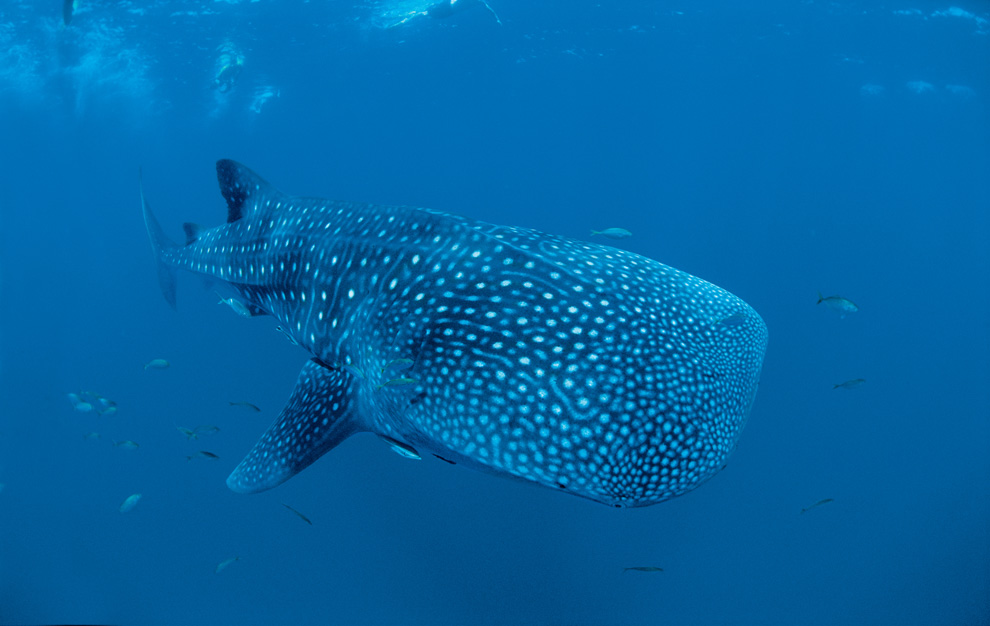 18 Off the coast of western Australia, small fish cluster around a whale shark, using it as shelter from predators. (© National Geographic/Brian Skerry) # 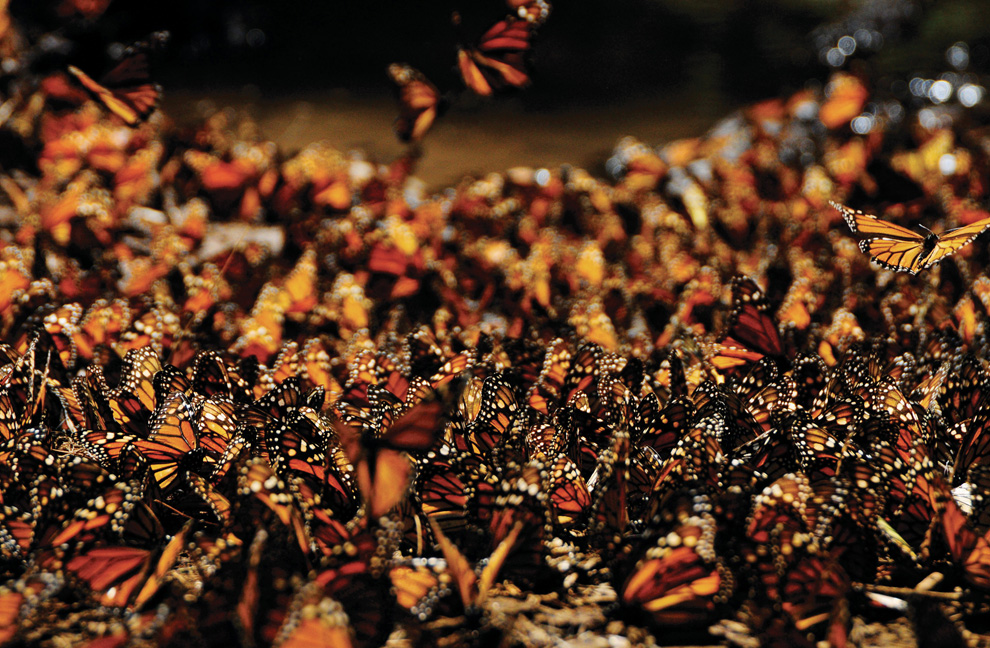 19 Monarch butterflies clump by the millions on oyamel trees in Mexican forests. But before migrating northward in the spring, the butterflies drop from the trees and begin a giant mating spree. (© National Geographic/Stephanie Atlas) # 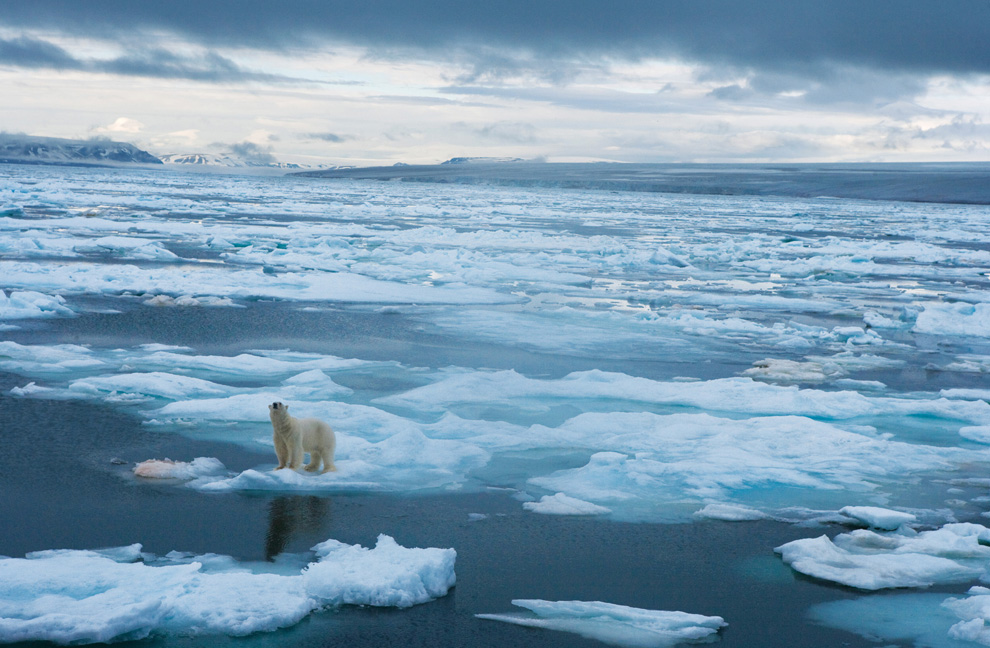 20 A polar bear stands on sea ice. The ice is critical to its habitat, and is decreasing in the warming Arctic. (© National Geographic/Paul Nicklen) #  21 Mali elephants must travel in a perpetual migration across the arid Sahel region in search of food and water. Their yearly 300-mile trek is the longest known elephant migration. As the climate becomes more fickle and human demands on land and water increase, these desert nomads face an ever more uncertain fate. (© National Geographic/Anup & Manoj Shah) # 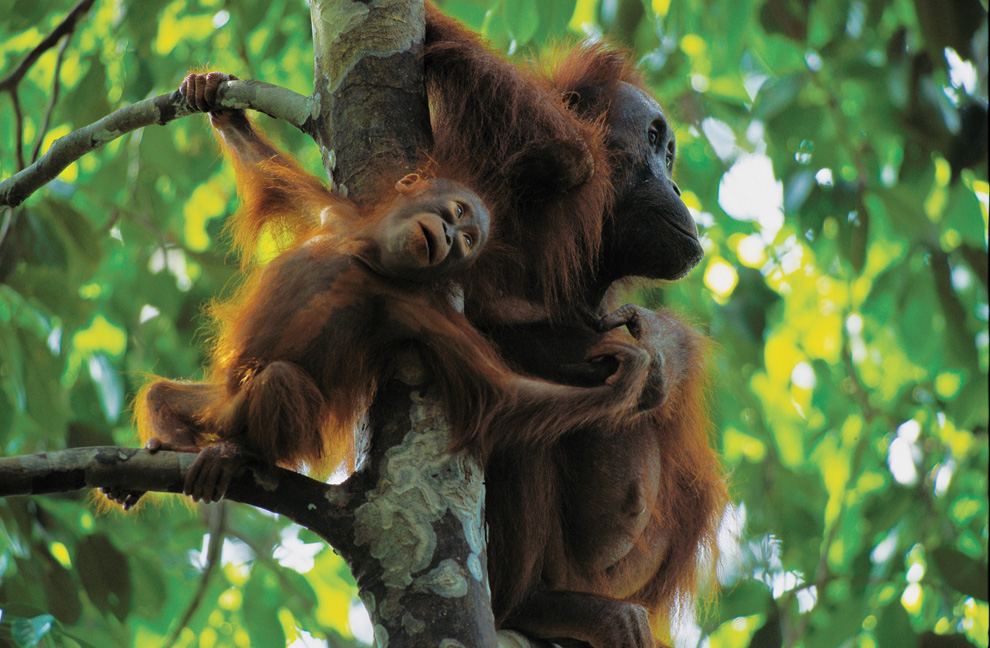 22 A female Bornean orangutan carries her one-year-old offspring to safety. Orangutans are always after food. Their lives revolve around the search for it. Remarkably, they seem to memorize an internal guide that leads them back to trees just at the time they are in fruit. (© National Geographic/Tim Laman) # 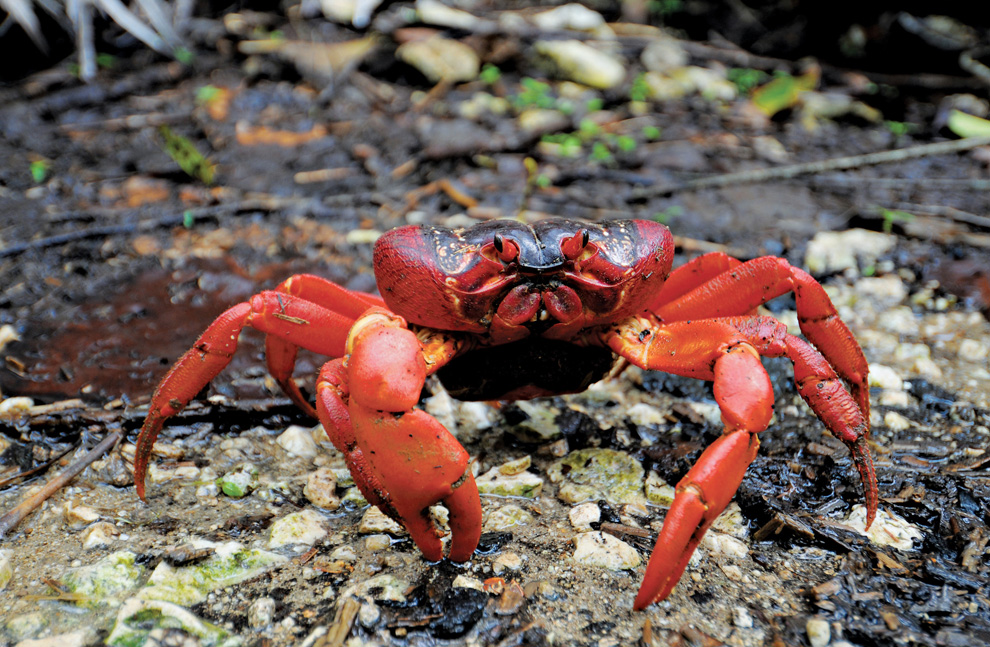 23 During their weeklong migration, the red crabs of Christmas Island must climb down precipitous cliffs, where many fall and die before reaching their destination on the shore. (© National Geographic/David Hamlin) # 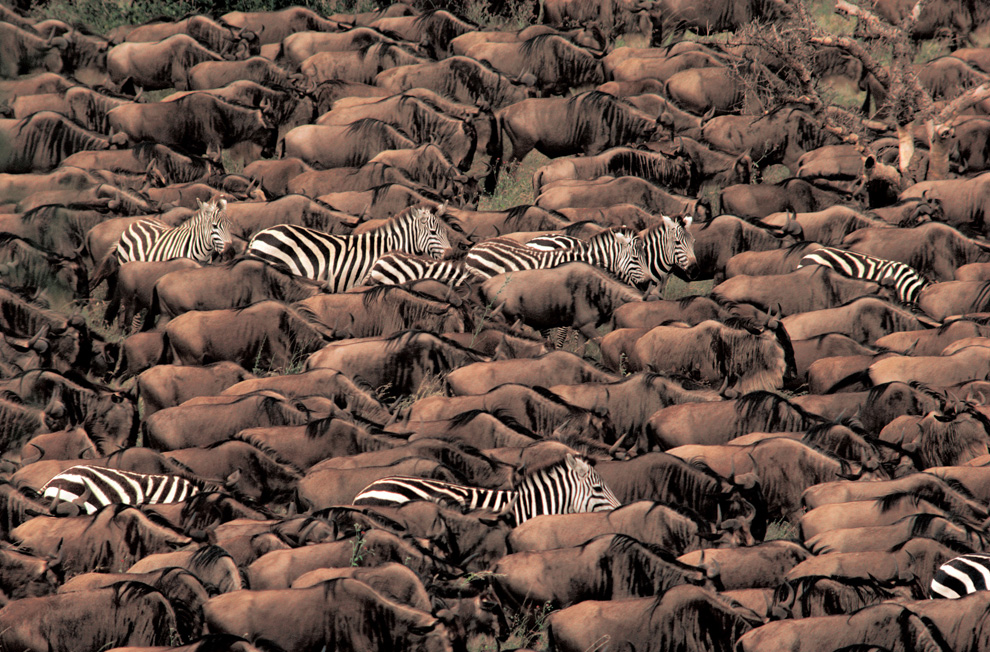 24 Plains zebras typically accompany the wildebeest - danger lurks if the big equines become separated from the herd. (© National Geographic/Mitsuaki Iwago/ Minden Pictures) #  25 An advancing white shark typically means doom for any large sea mammal it approaches, even for huge elephant seals off Guadalupe Island off Mexico's Pacific coast. (© National Geographic/Mauricio Handler) #  26 Rangeland fences are an omnipresent barrier to the pronghorn, which is not designed for leaping high. When it tries to squeeze under, it can be ensnared in a barbed wire death trap. (© National Geographic/Joe Riis) # 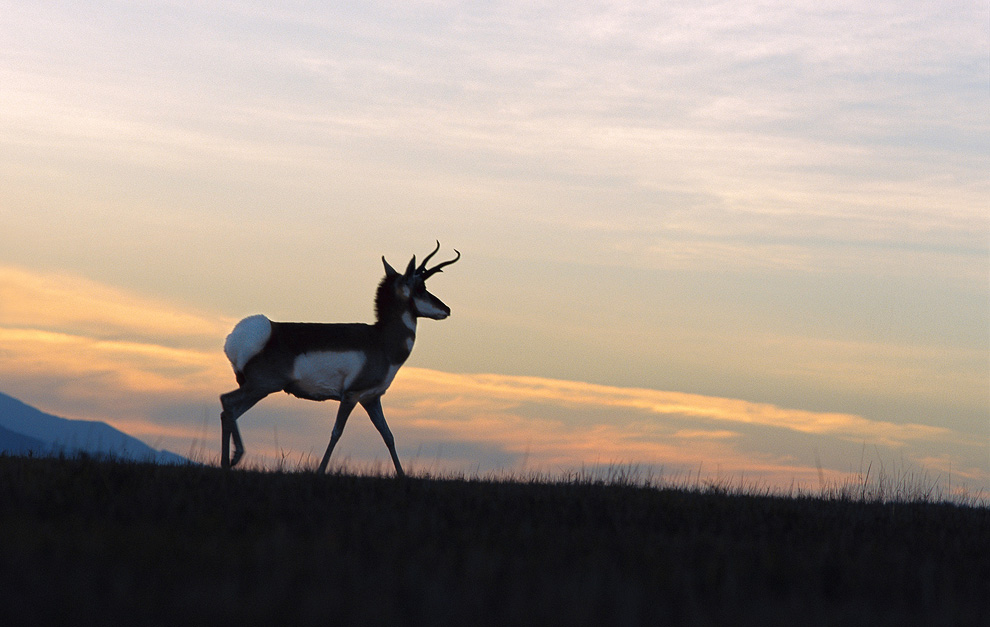 27 Dusk silhouettes a pronghorn at the Heart Mountain National Antelope Refuge in Oregon. (© National Geographic/Michael Durham/Minden Pictures) # 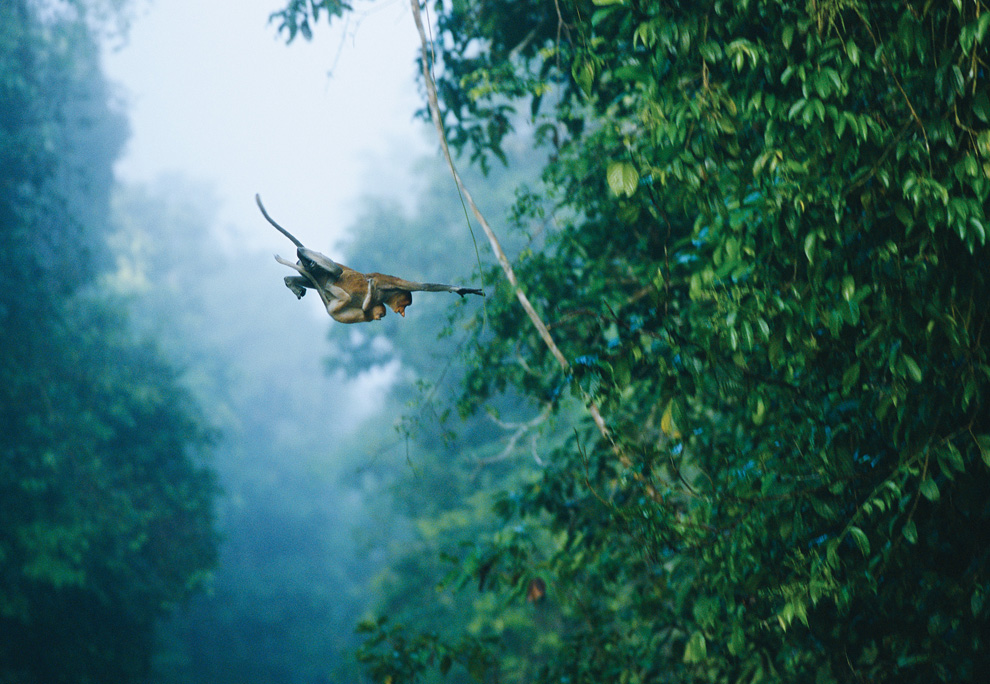 28 A proboscis monkey, her infant holding tightly, makes a flying leap in the Bornean forest. (© National Geographic/Tim Laman) # 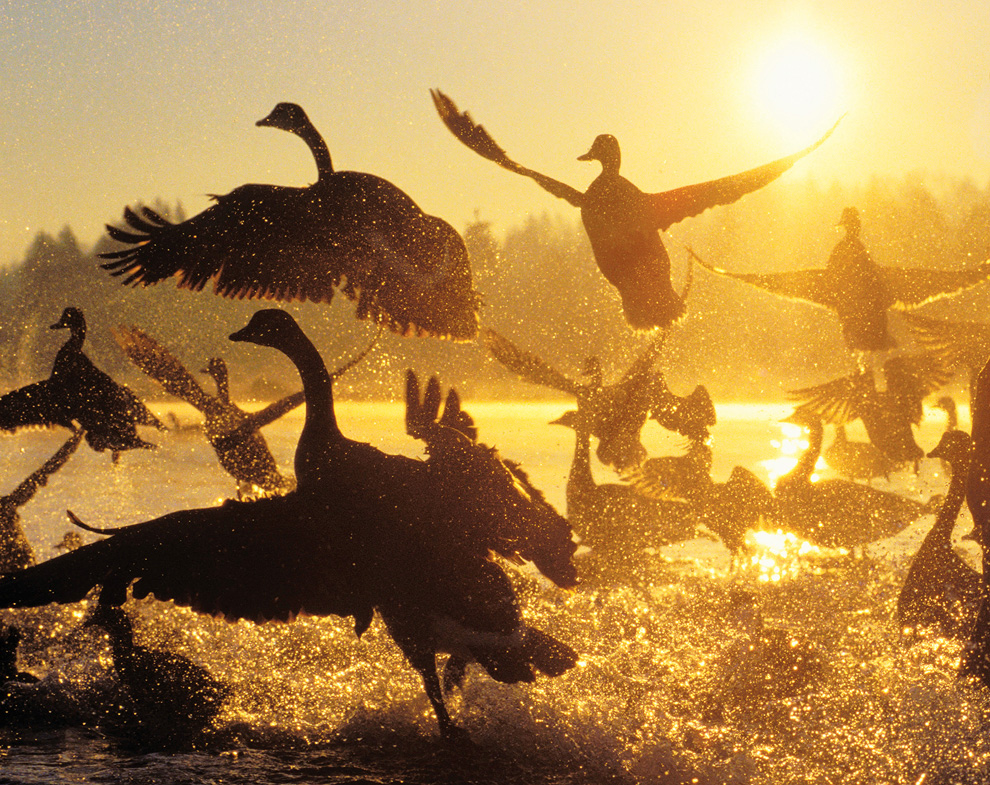 29 With a whoosh of wings and a splash, Canada geese pause, feed, rest, and then take off to resume their migration toward northern breeding grounds. (© National Geographic/Thomas Kitchin & Victoria Hurst/Getty Images) #

 |
No comments:
Post a Comment